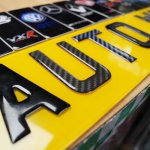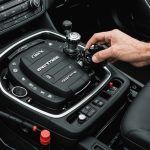Transform Your UK Car with Stunning LED Interior Lighting: A Step-by-Step Retrofit Guide
Why Upgrade to LED Interior Lighting?
Upgrading your car’s interior lighting to LED can significantly enhance the driving experience, making your vehicle more modern, comfortable, and visually appealing. Here are a few reasons why you might consider this upgrade:
- Energy Efficiency: LED lights are far more energy-efficient than traditional lighting options, which means they consume less power and can help extend the life of your car’s battery.
- Durability: LEDs have a longer lifespan compared to other types of lighting, often lasting up to 50,000 hours or more, reducing the need for frequent replacements.
- Customization: With LED lighting, you can choose from a wide range of colors and modes, allowing you to personalize the interior of your car to match your mood or preferences.
- Ambiance: LED interior lighting can create a unique and inviting ambiance, making your car feel more luxurious and comfortable.
Choosing the Right LED Interior Lighting Kit
Before you start the retrofit process, it’s crucial to select the right LED interior lighting kit for your car. Here are some key factors to consider:
Additional reading : Ultimate guide to ceramic coating in kent: protect your ride
Compatibility
Ensure the LED kit is compatible with your vehicle’s make, model, and year. You can use online tools like the Vehicle Bulb Finder to determine the correct fit for your car’s lighting system[2].
Features
Look for kits that offer a range of features such as:
In parallel : 5 Benefits of Installing Reflective License Plate Cover
- Color Options: Kits that offer RGB 16 million colors can provide a high level of customization.
- Control Options: Consider kits with APP and RF remote control for easy operation.
- Modes: Opt for kits with multiple modes like music sync, blink, fade, and jump to enhance the ambiance[4].
Components
Make sure the kit includes all necessary components such as:
- LED strips
- RF remote
- USB cable
- Positive and negative cables
- Pry tool and manual
Here is a detailed list of what you might expect in a comprehensive LED interior lighting kit:
- LED Strips: These are the main lighting components. Look for strips that are waterproof and made from durable materials like aluminum alloy or ABS.
- Control Devices: This includes the RF remote and APP control options.
- Cables and Connectors: Ensure the kit includes all necessary cables and connectors for a seamless installation.
- Tools and Manuals: A good kit should come with a pry tool and a detailed manual for installation.
Step-by-Step Installation Guide
Installing LED interior lighting can be a fun and rewarding DIY project. Here’s a step-by-step guide to help you through the process:
Preparation
- Gather Tools and Materials: Make sure you have all the components of the LED kit, along with any additional tools you might need like a screwdriver or wire strippers.
- Consult Your Car’s Manual: Check your car’s manual to understand the wiring and lighting system of your vehicle.
Removing Trim and Accessing Wiring
- Remove Trim and Panels: Use a pry tool to carefully remove the trim and panels to access the wiring. Start with the door cards and work your way around the interior.
- Identify Wiring: Identify the wiring for the existing interior lights. You may need to consult your car’s wiring diagram for this.
Installing LED Strips
- Cut and Connect LED Strips: Cut the LED strips to the desired length and connect them to the power source. Make sure to follow the manufacturer’s instructions for connecting the strips.
- Mount LED Strips: Use adhesive or clips to mount the LED strips in the desired locations such as under the dashboard, in the footwell, or along the door cards.
Connecting and Testing
- Connect to Power Source: Connect the LED strips to the power source. You may need to splice into the existing wiring or use a separate power source.
- Test the Lighting: Turn on the lights to ensure they are working correctly. Adjust the positioning of the strips if necessary.
Here is an example of how you might install footwell lights:
- Remove the footwell trim using a pry tool.
- Identify the wiring for the existing footwell lights.
- Cut and connect the LED strips to the desired length.
- Mount the LED strips under the footwell area.
- Connect the LED strips to the power source.
- Test the lights to ensure they are working correctly.
Legal and Safety Considerations
When retrofitting your car with LED interior lighting, it’s important to consider legal and safety aspects:
Legal Compliance
Ensure that any modifications you make comply with local and national regulations. For example, some countries have specific rules about the color and intensity of interior lights[5].
Safety
- Electrical Safety: Make sure all connections are secure and insulated to avoid any electrical hazards.
- Visibility: Ensure that the LED lights do not obstruct your view or distract you while driving.
Tips and Tricks for a Successful Retrofit
Here are some tips to help you achieve a successful and visually appealing LED interior lighting retrofit:
Plan Your Layout
Before starting the installation, plan out where you want to place the LED strips. Consider the ambiance you want to create and the areas you want to highlight.
Use the Right Adhesives
Use high-quality adhesives or clips to secure the LED strips. This will ensure they stay in place and do not come loose over time.
Test as You Go
Test the lights as you install them to ensure everything is working correctly. This will save you time and frustration in the long run.
Real-Life Examples and Testimonials
Many car enthusiasts have successfully retrofitted their vehicles with LED interior lighting, achieving stunning results. Here’s what some of them have to say:
“I recently installed an LED interior lighting kit in my car, and it completely transformed the ambiance. The RGB colors and music sync mode make it feel like a luxury car.” – John D., Car Enthusiast
“The installation was easier than I expected. The kit came with a detailed manual, and the APP control makes it so easy to adjust the lights to my mood.” – Sarah K., DIY Enthusiast
Comparative Table: Popular LED Interior Lighting Kits
Here is a comparative table of some popular LED interior lighting kits available in the market:
| Brand | Jushope | HELLA | Super Bright LEDs |
|---|---|---|---|
| Color Options | RGB 16 Million Colors | Single Color | RGB and Single Color |
| Control Options | APP and RF Remote | Manual Switch | APP and Manual Switch |
| Modes | Music Sync, Blink, Fade | Static | Music Sync, Static |
| Components | LED Strips, RF Remote, USB Cable, Pry Tool | LED Strips, Manual Switch, Cables | LED Strips, APP Control, Cables |
| Compatibility | Universal Fit for Most Cars | Specific Models | Universal Fit with Bulb Finder |
| Price Range | £50-£100 | £100-£200 | £50-£150 |
Upgrading your car’s interior lighting to LED can be a rewarding and enjoyable project that enhances both the functionality and aesthetics of your vehicle. By choosing the right kit, following a step-by-step installation guide, and considering legal and safety aspects, you can achieve a stunning and personalized interior lighting system.
Remember, the key to a successful retrofit is careful planning, attention to detail, and a willingness to learn and adapt. With the right tools and a bit of patience, you can transform your car into a unique and inviting space that reflects your personality and style.
So, why wait? Start your LED interior lighting retrofit journey today and experience the difference it can make in your driving experience.
Understanding LED Interior Lighting for Cars
LED interior lighting, celebrated for its versatility and efficiency, offers car customization enthusiasts a range of benefits. Unlike traditional lighting options, such as halogen or incandescent bulbs, LED lights are renowned for their longevity and energy efficiency. This means they draw less power, ultimately proving more cost-effective over time.
The aesthetic allure of LED interior lighting is evident in the vibrant and diverse shades available. These lights can transform the ambience of a car cabin, enhancing its appeal and reflecting personal style. Furthermore, LED lights offer consistent brightness, providing better visibility than traditional options.
A comparative look sheds light on why LEDs dominate: they don’t emit much heat, which increases their lifespan and reduces air conditioning needs. Their compact size allows for intricate design placements, which is advantageous for those keen on detailed car customization.
In the UK, the use of LED interior lighting is increasingly popular among car enthusiasts. This trend underscores a cultural shift towards embracing new technology that aligns with both environmental consciousness and design sophistication. As popularity trends continue to rise, more drivers are recognising the myriad benefits of switching to LED interior lighting.
Tools Required for Retrofitting LED Lights
Retrofitting LED lights in your car is a rewarding DIY car lighting project. To achieve a successful transformation, having the right tools needed for LED retrofit is essential. Let’s delve into what’s necessary and beneficial for this exciting car modification task.
Start with the essential tools. A screwdriver set is crucial for removing existing light housings. An electrical tester assists in diagnosing and ensuring connections are correct. Wire strippers and crimping tools are vital for making secure electrical connections.
For an enhanced installation experience, consider some optional tools. A heat gun can aid in sealing connections with heat shrink tubing, providing extra protection against moisture. A soldering iron allows for more durable and reliable connections compared to crimping alone.
Safety is paramount. Safety equipment like protective gloves and eyewear safeguards against accidental injuries from sharp components or electrical mishaps.
Employing the right tools not only ensures a smooth installation process but also significantly contributes to the success and longevity of your car modification project. Remember, meticulous planning and preparation complemented by the proper tools can turn your car into a modern, energy-efficient beacon of light.
Step-by-Step Retrofit Instructions
Transforming your vehicle’s lighting with a DIY LED retrofit can be a rewarding project, offering both improved aesthetics and performance. To ensure success, preparation and planning are essential.
Preparation and Planning
Before diving into the technical aspects, conduct thorough research on your vehicle’s lighting specifications. This will help you understand compatibility and avoid any unforeseen issues. Craft a detailed lighting layout, deciding where each LED will be placed for the best effect and practicality.
Prepare the car’s interior by cleaning the areas where the new lights will be installed to ensure a smooth installation process. Removing obstacles will allow better access to wiring areas, making the task more manageable.
Removing Existing Lighting Components
Carefully remove current lighting components to avoid damaging your car’s interior. Adopting safe removal techniques, like disconnecting the battery, is crucial for protecting the electrical system. Check existing wiring compatibility with your new LEDs to prevent future complications. Use protective covers and padded tools to safeguard interior finishes.
Installing LED Lights
Align the installation with your initial design plan, connecting the LED lights securely. To prevent movement, try using adhesive clips or zip ties. When wiring, ensure connections are neat, using cable ties to keep everything tidy. A clean installation not only improves functionality but also enhances the overall look, giving your car a polished finish.
Popular LED Options for Cars
When exploring suitable LED light types for car interiors, it’s essential to understand the array of choices available. These include LED strip lights, interior dome lights, accent lights, and footwell lights. Each type serves a unique purpose, giving car owners the flexibility to customise their vehicles according to their style and functionality needs.
TOP car LED products frequently chosen in the UK market include brands like Philips, OSRAM, and Auxbeam. Philips is renowned for its high-quality LED strip lights that are both vibrant and durable. OSRAM offers premium dome lights known for their longevity and precise illumination. Meanwhile, Auxbeam stands out by providing robust accent and footwell lights that are easy to install and adjust.
Comparing costs of these popular LED lighting options reveals a range of pricing tailored to different budgets. Philips products often come with a higher price tag due to their excellent performance and durability. OSRAM offers a mid-range price, providing a balance between cost and quality. Auxbeam is typically more affordable, making it a favourite among budget-conscious consumers seeking reliable performance.
When choosing LED lighting, considering factors such as compatibility, installation process, and warranty is crucial. These aspects ensure that selected products not only enhance the vehicle’s aesthetic appeal but also maintain functionality and longevity.
Creative Lighting Ideas for Customization
Venturing into the world of creative car lighting not only enhances the aesthetic appeal of your vehicle but also allows for a unique touch of personalization. One of the key components in this realm is the use of interior LED ideas. These lights are a versatile tool, easy to install, and perfect for creating the desired mood or ambiance inside your car.
When considering car customization tips, focusing on lighting can dramatically transform your vehicle’s interior. LEDs offer a spectrum of colors and patterns, allowing you to choose the right setup for any occasion. Imagine a serene blue glow for a calm evening drive or vibrant red accents for a sporty edge during spirited drives.
Innovative lighting setups aren’t limited to just aesthetics. They also play a role during special occasions or seasonal changes. For instance, you might opt for warm white lights during the festive months, or playful pastel hues to usher in springtime. Such seasonal ideas don’t just enhance your car’s look but also help you stay in sync with the celebrations around you.
By paying attention to these elements, you’re not merely upgrading your car – you’re crafting an experience that reflects your personality and suits your lifestyle.
Safety Considerations and Maintenance Tips
When working with car LED lighting, it’s crucial to consider electrical safety. Always disconnect the car’s battery before making any changes to the lighting system. This precaution prevents electrical shocks and potential short circuits. Retrofitting safety tips advise using compatible connectors and wires to prevent overheating, which can lead to LED light failures.
Maintaining your car interior lighting is vital for prolonged LED lifespan and performance. Regularly check LED lighting for any signs of wear or damage, such as flickering or dimming lights. Keeping lenses and housings clean ensures optimal light output and reduces heat build-up. Simple cleaning with a soft cloth can prevent dust accumulation, which can affect the lights’ efficiency.
If troubleshooting is needed for your LED lighting setup, first verify all connections. A common issue is a loose wire, which can be corrected by securing terminals and ensuring no corrosion is present. Additionally, checking for blown fuses and replacing them if necessary can resolve lighting issues.
By embracing these safety and maintenance tips, you promote safer and longer-lasting use of car LED lighting. This proactive care helps reduce costs associated with frequent light replacements and improves overall lighting performance.
Understanding LED Interior Lighting
LED car lighting has become a popular choice among vehicle owners due to its multitude of benefits. Unlike traditional incandescent bulbs, LEDs offer unparalleled energy efficiency, consuming significantly less power. This efficiency translates into less strain on your car’s battery and a more sustainable choice overall. It’s worth noting that the energy efficiency of LED lights contributes to their extended lifespan, often lasting several times longer than conventional options.
Another key advantage is the remarkable impact LED lighting can have on vehicle aesthetics. LEDs offer a wide spectrum of colours, allowing for customisation that can enhance the overall interior ambiance. Whether you’re looking to create a calming atmosphere or a more vibrant setting inside your vehicle, LED lights provide the flexibility to suit your desired mood.
Furthermore, LED interior aesthetics aren’t just about colour. The crisp, clear illumination provided by LED lights ensures that every corner of your vehicle’s interior is well-lit, significantly improving visibility while driving at night or in dim conditions.
Overall, choosing LED car lighting is not only a smart investment in the aesthetic appeal and visibility of your vehicle, but also a practical decision in terms of energy savings and long-term reliability.
Tools and Materials Required
Starting your LED installation project requires gathering the right tools and materials to ensure a seamless installation. Here’s a comprehensive list to help you get started.
Essential Tools for Retrofitting:
- Screwdrivers: An assortment, including both Phillips and flat-head, is pivotal for accessing and securing various car parts.
- Wire strippers and cutters: These are necessary for handling electrical connections safely and effectively.
- Pry tools: Plastic pry tools prevent damage when removing panels and trims during the installation.
LED Lights for Car Interiors:
Selecting the right LED lights is crucial. There are various types suitable for car interiors, including strip lights, panel lights, and dome lights. Each type offers unique advantages, ensuring your retrofit kit fits your preference for brightness and aesthetics.
Additional Materials Needed:
To complete the installation seamlessly, consider acquiring these additional materials:
- Wiring harnesses: These simplify the connection process, ensuring a tidy setup.
- Electrical tape and connectors: Secure connections and protect against shorts.
- Retrofitting kit: A straightforward option that often contains most essentials, making your project more manageable.
With these tools and materials in hand, you’re well-equipped to enhance your car’s interior lighting. Such preparation ensures the installation is not only efficient but also enjoyable.
Step-by-Step Installation Process
Embarking on a step-by-step retrofit requires thorough preparation and careful execution to achieve the ideal results. This guide ensures you engage effectively with the process.
Preparing Your Vehicle
Before diving into your LED installation guide, focus on properly preparing your vehicle. Begin by cleaning the interior surfaces where the LED strips will be attached. Use a gentle cleaner to remove dust and debris, as this will help the adhesive on the LED strips to bond more effectively. Once clean, dry the surface thoroughly. Consider the arrangement of connecting LED lights to your desired areas to implement your step-by-step retrofit efficiently.
Installing LED Strips
Positioning is crucial when installing LED strips. Carefully measure your application area, ensuring the strips won’t obstruct any vehicle functions. Remove the protective backing of the adhesive and press the strips firmly into place. Make sure they are aligned and secure.
Wiring and Powering the LED Lights
Connecting LED lights properly is pivotal for optimal performance. Follow the wiring instructions provided with your kit, focusing on correct polarities and grounding. Consider using splitters for multiple light sources or extending wires for better reach. Connect everything to a suitable power source, like the vehicle’s battery or a dedicated fuse. Ensure all connections are tight and insulated to prevent short circuits. Your LED installation guide is the perfect resource to address any arising issues.
Customization Options for LED Lighting
With advanced LED customization capabilities, personalizing your car’s lighting has never been easier. Begin by choosing colors and effects that align with the mood you want to set. Whether it’s a calm blue for a relaxing drive or an energizing red for a spirited journey, the spectrum of LED options provides endless possibilities.
For those eager to infuse a personal touch, DIY customization ideas can transform your car’s interior. Consider using colour-shifting strip lights or spotlit accents to create a truly unique aesthetic. You might explore layering different effects to design an ambience that evolves with your choice of music or driving environment.
Incorporating smart lighting systems takes customization to the next level, offering advanced control through smartphone applications or voice-activated assistants. This technological edge allows you to seamlessly switch between pre-set themes or manually adjust settings on-the-go. With features like geo-fencing and adaptive brightness, these systems ensure your lighting remains both functional and uniquely tailored to your preferences.
Each element, from color selection to effect detailing and smart integration, plays a crucial role in crafting an individualized driving experience. Dive into the world of LED personalized car lighting to make your vehicle truly your own.
Safety Tips and Precautions
Installing LED lighting requires mindfulness about safety during installation to ensure both immediate and long-term protection. Begin by ensuring that the power source is turned off to avoid electrical hazards, a fundamental step often overlooked. Use a voltage tester to confirm the absence of electrical currents before proceeding, as this simple tool can prevent potential accidents.
In terms of wiring, selecting the correct gauge size is imperative. Incorrect wiring can lead to overheating, posing significant hazards. When connecting LED lights, ensure that connections are tight and secure to maintain safety during installation and avoid loose ends that could cause short circuits. Labeling wires can also facilitate future maintenance.
Another key aspect to consider is LED light safety. Ensure that all LED drivers and components are compatible with each other to prevent electrical overloads. Follow the manufacturer’s guidelines thoroughly to maintain system integrity. Additionally, avoid surrounding LEDs with materials that might trap heat, as excess heat can degrade their performance and lifespan.
For optimal long-term functioning and LED light safety, regular maintenance checks should be scheduled. Clean the fixtures and inspect connections periodically. By taking these precautions, you establish a safe, efficient, and durable LED lighting system that minimizes risks while enhancing home or workspace ambience.
Cost Analysis of Retrofitting
When considering retrofitting your car with LED lighting, understanding the expenses involved is crucial. Costs can vary greatly depending on the scope of the project. On average, materials such as LED bulbs and necessary wiring kits can range between £50 and £200. These costs are determined by the quality and brand of LED products chosen.
For those working within a tight budget for car lighting, taking a DIY approach may be tempting. Opting for a self-installation can notably reduce expenses. For instance, installing LED lights yourself might cost around £100 at most, including all necessary tools. However, opting for professional installation provides assurance of proper setup, yet the cost may rise significantly, potentially up to £300, due to labour fees.
To achieve cost-effective solutions, compare prices and reviews for various LED lighting options before making a purchase. Websites and forums often provide valuable insights into the best budget-friendly options with satisfactory performance. Additionally, consider purchasing from reputable online retailers during sales periods for discounts. Another strategy to cut costs is to buy bundles or kits that include multiple items, which usually cost less than purchasing each component separately. These approaches can help balance your budget while ensuring high-quality lighting enhancements.
Troubleshooting Common Issues
Encountering LED troubleshooting can be frustrating but often tackles common problems with car lights effectively. Start by identifying installation errors. Ensure your LED lights are properly seated and connected; loose connections often cause flickering or dimming. Verify that circuit polarities are correct, as LEDs are polarity-sensitive.
Sometimes, the issue might not be with the LED bulb but with the car’s electrical system. Examine the fuse box for any blown fuses specific to your vehicle’s lighting circuit. Additionally, if you notice ongoing issues, consider checking the LED driver’s compatibility, as incompatibility can affect performance.
Recommended troubleshooting techniques include using a multimeter to measure voltage and resistance, which helps confirm electric flow integrity. Inspecting for corrosion or wear on connections can reveal physical problems undetectable by simple visual checks.
Maintaining your LED lights enhances their longevity and performance. Regularly clean the lenses and housings to prevent dirt build-up, which can impact brightness. Ensure moisture doesn’t infiltrate the system, as water can cause short circuits. Using dielectric grease on connectors can form a seal against the elements, providing added protection.
By systematically addressing these areas, resolving LED light issues becomes more manageable, restoring optimal function in no time.











